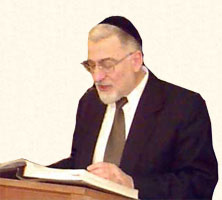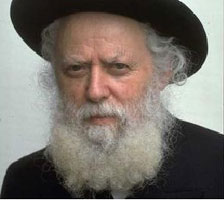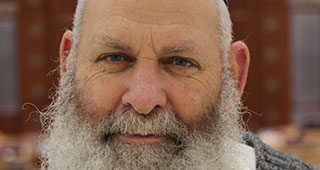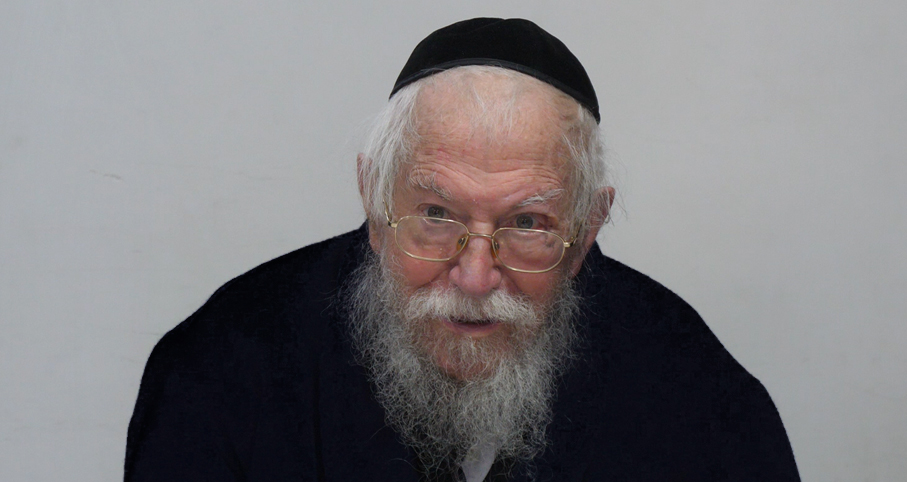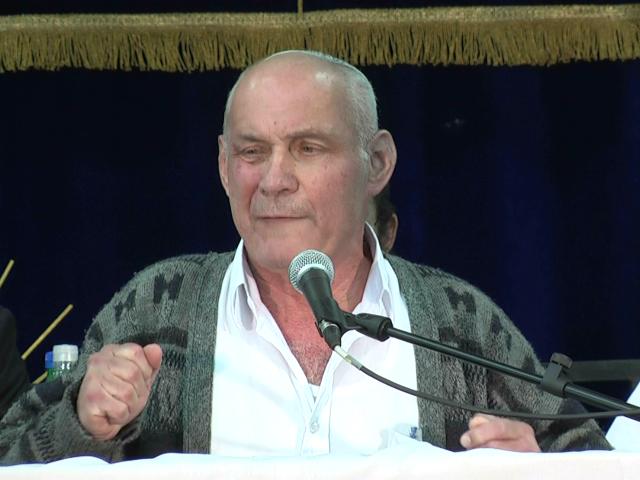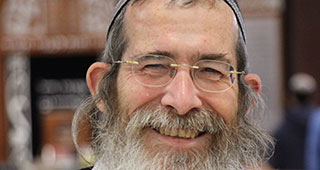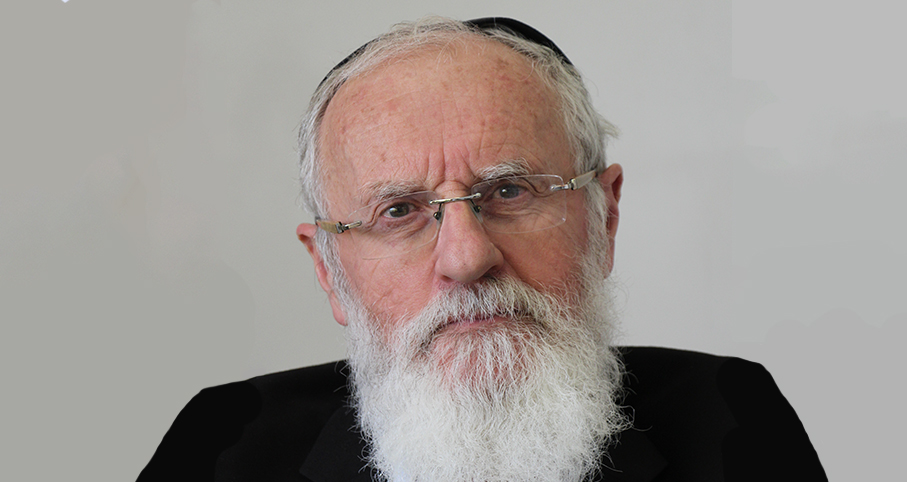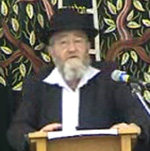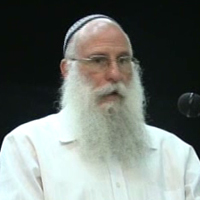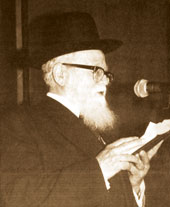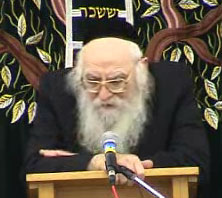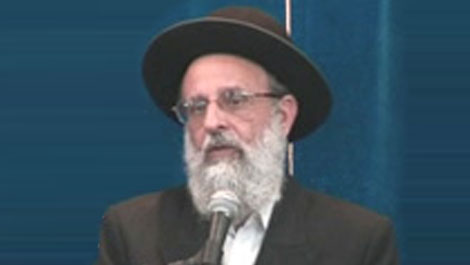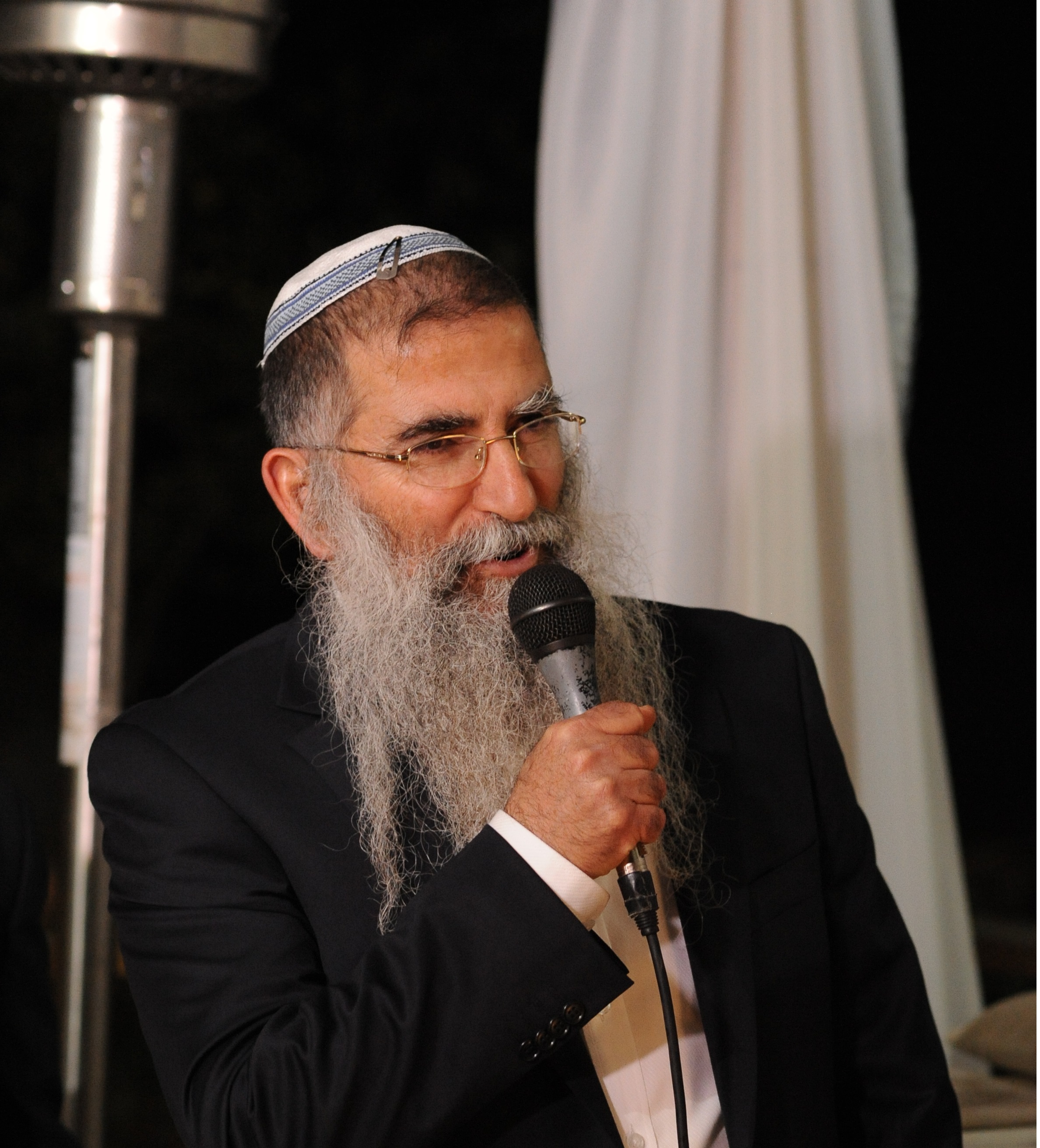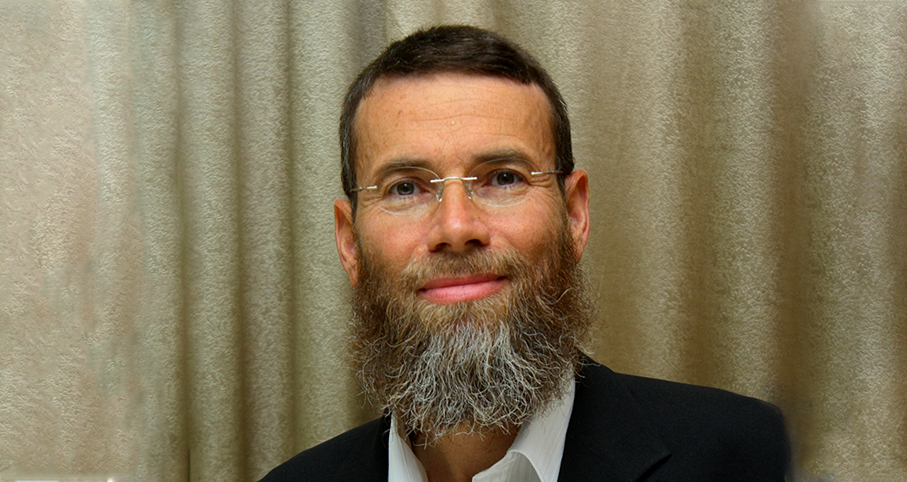Beit Midrash
- Library-Sifria
- Pninei Halacha
- Pesach
The Torah commandment to eat maror on the night of the fifteenth of Nisan is contingent upon the eating of the Paschal sacrifice, as it states: "They shall eat it with matzot and merorim [plural of maror]" (Bamidbar 9:11). Since we are unable to offer the Paschal sacrifice today, the mitzva to eat maror is now rabbinic (Pesaĥim 120a). We dip the maror in ĥaroset in order to counteract its bitterness, and then we shake off all the ĥaroset that sticks to it, because ĥaroset should not be eaten with the maror (SA 475:1, MB 13 and Kaf Ha-ĥayim 23 ad loc.). After this we recite the berakha "Who sanctified us with His mitzvot and commanded us concerning eating maror" ("asher kideshanu be-mitzvotav ve-tzivanu al akhilat maror"), and eat a kezayit of maror.
The Sages enumerate five types of maror: ĥazeret, tamĥa, ĥarĥavina, ulshin, and maror. Today we are only familiar with two of these: ĥazeret, which is lettuce, and tamĥa, which is horseradish. The Sages stated that the choicest type of maror is lettuce, and its Hebrew name ("ĥasa") even alludes to the fact that God has mercy ("ĥas") upon us. They also tell us that the Egyptian enslavement was like maror: just as maror begins soft and ends hard – the stalk starts off soft and later hardens – so too the enslavement began "softly" and became harder and bitterer with time (Pesaĥim 39a).
Several Aĥaronim questioned whether we fulfill the obligation of maror with today’s lettuce, which is not bitter at all. Indeed, according to Ĥazon Ish, one may fulfill one’s obligation only with lettuce that has become somewhat bitter. In practice, though, the poskim concur that one may fulfill one’s obligation with lettuce even if it is not bitter, because this was the nature of the bondage: initially the Egyptians enslaved us with gentle words and paid us for our labor, while gradually intensifying the work until it was bitter as gall. The Yerushalmi (Pesaĥim 2:5) likewise tells us that lettuce starts out sweet and then becomes bitter. Thus, it is the custom of all Jews to optimize this mitzva by using lettuce for maror, because maror need not be bitter when it is eaten; rather, it must be of a species that eventually becomes bitter. Some people add a bit of horseradish to their lettuce so that they taste some bitterness. 23
Since lettuce often contains bugs, it should be cleaned and checked thoroughly on Erev Pesaĥ. Nowadays there are ways to grow bug-free lettuce, and it is best to use such lettuce in order to avoid potentially violating the prohibition against eating bugs.
One must eat a kezayit (half an egg’s volume) of maror, and one may estimate this size by sight. As we have learned, some customarily calculate a kezayit by weight, which is about 29 grams. However, with lettuce there is very little difference between a weight- and volume-based kezayit.
28.Korekh
After eating the maror, we make a sandwich from a kezayit of maror in a kezayit of matza and dip it in ĥaroset. Some people also shake off any ĥaroset that sticks to the maror, as with the eating of maror (MB 475:19). Others do not remove the ĥaroset from the maror in the case of korekh (Kaf Ha-ĥayim 457:32). We then say "zekher le-Mikdash ke-Hillel" ("in commemoration of the Temple, according to Hillel"), and eat the korekh while reclining (SA 475:1). As we learned, a kezayit is about a third of a machine matza.
According to Hillel the Elder, in Temple times the mitzva was fulfilled by eating matza and maror together, as it is stated: "They shall eat it with matzot and merorim" (Bamidbar 9:11). According to the other Sages, people would eat the matza and maror separately. Since no final decision was reached regarding this matter, we follow both practices.
However, even Hillel would concur that today it is impossible to fulfill one’s obligation by eating matza with maror. This is because without the Paschal sacrifice the mitzva to eat matza remains Torah-based, while eating maror is of rabbinic origin. If they are eaten together, the maror, which is rabbinic, will detract from the matza, which is from the Torah. Therefore, one must first eat a kezayit of matza. After this, one eats a kezayit of maror without matza, because the matza obligation has already been fulfilled, and if one eats matza with maror at this point, the taste of the matza, which is no longer a mitzva, will overshadow the taste of the maror, which is a rabbinic mitzva. After fulfilling both mitzvot separately, we put matza and maror together like a sandwich and eat them in commemoration of Hillel’s practice (Pesaĥim 115a and Tosafot s.v. "ella"; MB 475:16). And some say that while it is clear that today, according to Hillel, the matza must be eaten separately, nonetheless, in order to fulfill the rabbinic mitzva to eat maror, it must be eaten with matza. According to this opinion, when we eat the korekh, we are fulfilling the mitzva to eat maror (Pri Ĥadash).
In any event, according to all opinions one should be careful not to talk until he has finished eating korekh. Indeed, it is customary to refrain from talking between the blessing over the matza and that of the maror, until we have finished eating the korekh. It is only permissible to talk about matters related to fulfilling the mitzva. 24
29.Those Who Have Difficulty Eating Matza
As we have learned, a kezayit of matza is about a third of a machine matza, and on the Seder night we must eat four or five pieces of this size. After the berakhot of "ha-motzi" and "al akhilat matza," we eat two kezeytim: one for "ha-motzi" and one for "akhilat matza," and in order to fulfill the stringent opinion (Ĥazon Ish), which maintains that a kezayit is twice the accepted size. We eat another kezayit for korekh, and one more for the afikoman, though some practice the stringency of eating two kezeytim for the afikoman: one in memory of the Paschal sacrifice itself, and one in commemoration of the matza that would be eaten with it.
If one finds it difficult to eat a matza and a third (or two-thirds), he should do his best to eat the initial two-thirds of a matza as matzat mitzva, in order to fulfill the mitzva in accordance with all of the different opinions. After this, it is sufficient to eat a fifth of a matza for korekh and another fifth for the afikoman. If even this is difficult, one can eat a third of a matza – a kezayit according to the standard measure – to fulfill the mitzva of eating matza, and recite a berakha over it. In other words, during the entire Seder, he would eat one third of a matza followed by an additional two-fifths. 25
If one has difficulty chewing the matza – for example, one who has no teeth – he may crumble it up and eat the crumbs (BHL 461:4). If even this is too difficult, he may soak the matza in water before eating it. However, if one boils the matza or soaks it until it dissolves, he does not fulfill the mitzva with it, because it no longer has the taste of matza (SA 461:4, MB 19, 20).
It is forbidden, however, to soak the matza in wine, soup, or any other beverage that has a taste, because some believe that this weakens the taste of the matza. Some maintain that even dipping the matza in such liquids is improper. Nevertheless, a sick or elderly person who cannot eat the matza even if it were soaked in water may soak it in another liquid if it would help, recite a berakha over it, and eat it. But if a normal healthy person eats matza that has been soaked in a liquid, he must eat another kezayit of matza (MB 461:18, SHT 32 and Kaf Ha-ĥayim 47-48 ad loc.). 26
30.Those Exempt from Matza and Maror
One who is incapable of eating a kezayit of matza (one third of a matza) should at least try to eat a portion of matza equivalent to a modern-day olive, because some poskim maintain that this is the true size of a kezayit. However, one may not recite the berakha of "al akhilat matza" over this amount of matza, because most poskim maintain that it is insufficient for fulfilling the mitzva to eat matza. If one cannot eat even the volume of a modern-day olive, it is still good to eat as much matza as possible, even a small amount. 27
Regarding one who knows that eating matza will cause him to become ill or intensify an existing illness but will certainly not threaten his life, the poskim disagree over whether he is obligated to eat matza: according to R. Shlomo of Vilna, such a person is exempt from eating matza on Pesaĥ (Binyan Shlomo §47), whereas according to Maharam Schick, a sick person is only exempt from eating matza where there is mortal danger (OĤ §260). The custom is to rule in accordance with the lenient opinion. (Regarding maror and the four cups of wine, which are rabbinic mitzvot, there is a consensus that one who will be consigned to bed if he eats them is exempt, as explained in section 7.)
According to this, most people who suffer from celiac disease must eat a kezayit of matza on the Seder night, because a kezayit of matza will not cause them to become sick. Even if it will cause one to suffer somewhat, this is not considered sickness. However, people who suffer from severe celiac disease, and who know that they are liable to have a strong reaction to matza, are exempt from the mitzva of eating matza. Nowadays one can find matzot made from oatmeal and spelt flour, which are better than wheat matza for people with celiac disease. 28
31.The Time for Eating the Matza, Maror, and Afikoman
The matza and maror must be eaten by midnight (the midpoint of the night, regardless of the time on the clock), but if one was unable to eat them before midnight, he should eat them after midnight without a berakha. Le-khatĥila, even the afikoman should be eaten before midnight.
The basis for this law lies in a dispute between two Sages of the Mishna, R. Elazar b. Azarya and R. Akiva. According to R. Elazar b. Azarya, the Paschal sacrifice could be eaten only until midnight, and no later, because it was at midnight that the firstborns of Egypt were struck down, and the Egyptians began frantically trying to send the Israelites out of Egypt. According to R. Akiva, the matza may be eaten all night, until dawn, because it was at this time that the Israelites hurried to leave Egypt (Pesaĥim 120b).
From a spiritual perspective, we must explain that the offering and eating of the Paschal sacrifice revealed the unique quality of Israel, and this therefore constituted a preparation for the redemption. Accordingly, the meat of the korban Pesaĥ is eaten each year until the time of the redemption’s onset. The question is: which phase of redemption determines the time to stop eating the Paschal sacrifice? According to R. Elazar b. Azarya, the redemption started at midnight, when the firstborns of Egypt were struck down, for it was then that Egyptians’ power was broken and they could no longer enslave us. Therefore, the Paschal sacrifice is eaten until midnight. However, according to R. Akiva, the complete redemption did not arrive until morning, when we went forth to freedom. Therefore, the entire night is a preparation for redemption, and it follows that one may eat the meat of the korban Pesaĥ all night.
Let us now return to the halakha. The time for eating the Paschal sacrifice also determines the time for eating matza and maror, because matza and maror were eaten together with the Paschal sacrifice, as it is stated, "They shall eat it with matzot and merorim" (Bamidbar 9:11). It follows that the time for eating matza is the same as the time for eating the Paschal sacrifice. The afikoman, which is eaten in commemoration of the korban Pesaĥ, must also be eaten at a time that is appropriate for eating the Paschal sacrifice.
Leading Rishonim disagree about which opinion to follow in practice. According to Rambam and Itur, the halakha follows R. Akiva, because, as a rule, we follow R. Akiva whenever he takes issue with one of his contemporaries. Thus, the korban Pesaĥ may be eaten throughout the entire night, and by extension so can matza, maror, and the afikoman. On the other hand, Rabbeinu Ĥananel and Rosh maintain that because the Mishna, in several places, states without dissent that the time for eating the korban Pesaĥ is until midnight, we may conclude that R. Yehuda Ha-Nasi, who compiled the Mishna, rules that on this issue the halakha follows R. Elazar b. Azarya.
Since this issue is subject to dispute, a kezayit of matza must be eaten before midnight, because according to those who maintain that the Paschal sacrifice may be eaten until midnight, eating it after midnight fails to fulfill the Torah commandment. Since the destruction of the Temple, maror has been a rabbinic enactment, and although we generally follow the lenient opinion with regard to rabbinic laws, maror must nevertheless be eaten before midnight since we recite a berakha over it. If circumstances prevented one from eating the matza and maror before midnight, he should eat them after midnight, in order to fulfill the mitzva according to R. Akiva’s opinion. However, he should not recite the berakhot of "al akhilat matza" and "al akhilat maror," so as to avoid reciting a berakha in vain ("le-vatala") according to the opinion of R. Elazar b. Azarya (MB 477:6; Kaf Ha-ĥayim 10 ad loc.).
Regarding the afikoman, SA rules (477:1) that one must, le-khatĥila, eat it before midnight, in order to fulfill the mitzva according to all poskim. Similarly, Hallel should also be completed before midnight le-khatĥila, because it is connected to the telling of the Exodus story, which must be told at a time appropriate for eating matza.
There were Torah scholars who, le-khatĥila, ate the afikoman after midnight, reasoning that the afikoman is a rabbinic enactment and we may thus rely upon the lenient opinion that it may be eaten after midnight. However, with regard to the initial kezayit of matza, which is a Torah commandment, and the maror, over which we recite a berakha, one may not adopt the lenient position and eat them before midnight. 29
^ 23.. See Ĥazon Ish OĤ 124, commenting on Pesaĥim 39a. Ridbaz states that lettuce might not be maror at all. Nevertheless, most poskim, including Maharam Halawa and Tashbetz, believe that lettuce is the best type of maror, because the Gemara finds allusions in its name and because it alludes to the enslavement by its very nature – starting off soft and sweet. This is the ruling in SA 473:5, Pri Ĥadash 472:5, and SAH 472:30. Additionally, according to Raavya and Hagahot Maimoniyot (quoted by Tur and SA), whatever is mentioned first in the Mishna is the preferable choice for maror, and lettuce (which the Mishna calls "ĥazeret" even though "ĥazeret" in modern Hebrew is horseradish) is in fact mentioned first. Responsa Ĥazon Ovadia §35 expands on this topic.
We should also add that another opinion appears in a beraita in Pesaĥim 39a: any bitter vegetable that exudes latex and has a blanched complexion (i.e., it is whitish-green) is maror. The Rishonim debated this: according to Ri’az, Maharam Halawa, and others, any vegetable that has these characteristics is indeed maror. According to Smak, on the other hand, these characteristics are just features common to the five types of vegetables mentioned in the Mishna, but no vegetable outside what is listed in the Mishna is acceptable for maror. Rif and Rambam do not mention these characteristics, either because they maintain that only the five vegetables listed in the Mishna are acceptable, and these characteristics consequently are meaningless, or because they maintain that we are not experts in identifying these characteristics, so we have no ability to determine what other vegetables are fit for maror. Practically, one who does not have lettuce or horseradish should use another vegetable that has these characteristics, but should not recite a berakha over it, in case we are not adept at identifying these characteristics or it is not one of the five acceptable species. This is the ruling in MB 473:46 and BHL ad loc.
^ 24.. See Hilkhot Ĥag Be-ĥag 16:4 and Ha-Seder He-arukh ch. 92, which summarize that according to Hillel, if one ate each ingredient separately, he does not fulfill his obligation according to Rashbam and Ramban, while according to Tosafot and Ha-ma’or, he fulfills his obligation be-di’avad. As for the Sages’ position, if one ate them together he does not fulfill his obligation according to Rashbam (citing R. Yoĥanan) and Ha-ma’or, but according to Ramban and Rashbam (citing R. Ashi), he fulfills his obligation le-khatĥila.
^ 25.. I explained the basics of this issue in n. 20 above. We learned there that according to Rambam, a kezayit is slightly less than one third of an egg, while according to Tosafot it is c. half an egg. Since we are stringent and follow Tosafot vis-à-vis Torah commandments, one should eat one third of a matza for every kezayit. However, regarding korekh and afikoman, which are rabbinic mitzvot, if one has difficulty following Tosafot, he may follow Rambam and eat approximately one fifth of a matza, which is about one third of an egg. Even those who wish to eat two kezayit-sized pieces for afikoman may suffice with a fifth of a matza, which contains two kezeytim according to many Ge’onim and Rishonim (see Peninei Halakha: Berakhot 10:6) who maintain that a kezayit is the size of an average contemporary olive. Regarding the stringency of eating two kezeytim for the afikoman, one need not adopt the larger measurement of a kezayit.
^ 26.. See R. Harari’s Mikra’ei Kodesh 7:40 n. 103 regarding the ruling that one should recite a berakha even if he can only eat matza soaked in water; this is the conclusion even according to the strictest opinions.
^ 27.. It is implied by many Ge’onim and Rishonim that a kezayit is the size of today’s common olive, of c. 7.5 cubic centimeters. It is further attested that R. Ĥayim Volozhiner and the author of Avnei Nezer ruled according to this opinion. See Peninei Halakha: Berakhot 10:5-6 and in the expanded notes, and in the addendum to Mikra’ei Kodesh 5. Nevertheless, the standard ruling is to be stringent and follow the opinion of Tosafot that a kezayit is half an egg, as explained in n. 20. Even if one cannot eat the requisite amount of matza according to any opinion, he should at least taste some matza, as per Maĥzik Berakha §475 and AHS 477:3. MB 473:43 states the same idea regarding maror.
^ 28.. For the definition of one who is exempt due to illness, see R. Frank’s Mikra’ei Kodesh 2:32, which cites two opinions. Ĥazon Ovadia 1:33 and Tzitz Eliezer 14:27 are lenient. This is also what R. Harari writes in Mikra’ei Kodesh ch. 7 n. 110, in the name of Rav Mordechai Eliyahu.
^ 29.. A detailed explanation: On three occasions, the Mishna quotes the opinion of R. Elazar b. Azarya anonymously and without dissent – Berakhot 2a, Pesaĥim 120b, and Zevaĥim 56b – and R. Akiva’s opinion anonymously and without dissent only once, in Megilla 20b. Rosh (Pesaĥim 10:38) wonders how that single mishna in Megilla could outweigh the three mishnayot that follow the opinion of R. Elazar b. Azarya. Consequently, Rosh says that although R. Akiva maintains that on the Torah level, the mitzva of eating the korban Pesaĥ applies all night, he concurs that, on the rabbinic level, one must finish eating it before midnight. Therefore, Rosh states that one must eat the afikoman before midnight, and this is the ruling of SA 477:1. However, it is said that Ĥatam Sofer, Netziv, and other great scholars did not insist on finishing the afikoman before midnight. Since this is a dispute about a matter of rabbinic law, one may be lenient. Even SA might mean that one finishes the afikoman before midnight le-khatĥila, but it is not an absolute requirement. Responsa Avnei Nezer §381 recommends that one who is in the middle of his meal and sees that midnight is approaching should eat a kezayit of matza while reclining and make the following stipulation: If the halakha follows the opinion of R. Elazar b. Azarya, this kezayit should be the afikoman, but if the halakha follows R. Akiva, the kezayit that will be eaten after the meal (at its normal place in the meal) should be the afikoman. This stipulation is based on a novel interpretation: the requirement that the taste of the matza remains in one’s mouth only applies during the time of the mitzva, which according to R. Elazar b. Azarya ends at midnight. Thus, according to R. Elazar b. Azarya, one would be able to continue eating after midnight, when the time for the mitzva of afikoman ends.
However, one certainly must ensure that he eats a kezayit of matza before midnight, since eating a kezayit of matza is a Torah commandment, and hence one must be stringent. One must even be stringent vis-à-vis the mitzva of maror, since he cannot recite the berakha on it after midnight, as explained in MB 477:6 and BHL ad loc. Responsa Mishkenot Yaakov §139 and other Aĥaronim attempt to prove that the halakha follows Rambam. Nonetheless, the law still remains unclear, so one should not recite the berakhot on matza or maror after midnight and must likewise take care to fulfill the Torah obligation of matza before midnight. MB further states that if one begins late and does not have time to complete the recitation of the Hagada before midnight, he should eat the matza and maror, with berakhot, right after kiddush, and then recite the Hagada. Kaf Ha-ĥayim 477:10 echoes this idea, but rules that one may not recite the Birkat Ha-ge’ula (just before the second cup) after midnight, since we are lenient in a case of uncertainty regarding berakhot. See Ĥazon Ovadia vol. 2 p. 166, which agrees with MB and rules that one may recite Birkat Ha-ge’ula after midnight. Regarding the concluding berakha of Hallel, MB 477:7 and SHT 6 ad loc. cite Ĥok Yaakov that one may recite it after midnight. R. Harari’s Mikra’ei Kodesh, ch. 6 n. 70 demonstrates that be-di’avad one may recite Birkat Ha-ge’ula and the concluding berakha of Hallel after midnight.

